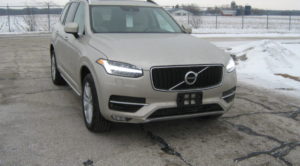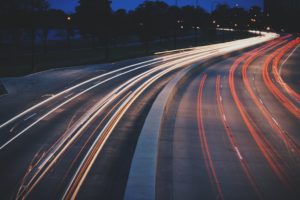
By now, you’ve almost certainly heard the story. Elaine Herzberg, 49, was struck and killed the night of Sunday, March 18th, 2018, in Tempe, Arizona. According to reports, she was walking her bicycle across North Mill Avenue, a road with a 45 mph speed limit, when she was hit by a Volvo XC90 equipped with autonomous driving technology. The XC90 belonged to Uber, who, along with a range of other companies, have been testing self-driving vehicles throughout the US in efforts to be the first to get the technology out on the streets. Let’s deconstruct things a bit.
When do pedestrians face higher risks of death in the United States?
The car, a Volvo XC90 sport utility vehicle outfitted with a sensor system, was in autonomous mode when it struck Elaine Herzberg around 10 p.m. on Sunday. There was a human safety driver at the wheel, but the car was carrying no passengers.

In 2016, the most recent year for which consistent data is available, nearly 6,000 pedestrians were killed in the United States due to auto traffic, representing 16% of auto fatalities. We know from research that pedestrians are most likely to be killed between 6 PM and midnight, ostensibly due to factors like decreased visibility and greater rates of speeding and drunk driving at night compared to during the day. The backup driver was sober and the vehicle in question was not speeding, but visibility was clearly reduced due to the time of the crash at 10 PM. In 2016, 9 PM-midnight was the second deadliest time of the day for pedestrians, with 23% of fatalities occurring at this time period, only exceeded by a 26% fatality rate between 6 PM and 9 PM.
Pedestrians are far more likely to be killed at higher speeds than lower ones
The vehicle was going about 40 miles an hour on a street with a 45-mile-an-hour speed limit when it struck Ms. Herzberg, 49, who was walking her bicycle across the street, according to the Tempe police.

We’ve talked about pedestrian risks tied to speed several times in the past, and for good reason: the higher a vehicle’s speed, the more likely it is to kill a pedestrian when striking one. As noted above, the Volvo wasn’t speeding. In fact, it was driving under the speed limit (a policy I always recommend). However, a 40 mph collision between a vehicle and a human being has a 95% chance of killing the human, and this was unfortunately the case here.
As evidenced in the video above, Elaine had not been using a crosswalk, which likely contributed to her unfortunate demise, but it is entirely possible that no crosswalks were readily available, given the high posted speed limit. A lack of infrastructure for pedestrians is one of the most salient factors in pedestrian fatalities in the United States and around the world, whether in the form of a lack of sidewalks, crosswalks, bridges, or other ways of navigating away from or alongside vehicular traffic.
“Drivers” can’t be expected to monitor self-driving cars by definition
It also appears that both of the safety driver’s hands were not hovering above the steering wheel, which is what most backup drivers are instructed to do because it allows them to take control of the car quickly in the case of an emergency.

Part of the media’s attention has gone toward the safety driver, who was apparently not paying attention to what the vehicle was doing or where it was going while it was driving. However, it makes little sense to criticize the safety driver here because the vehicle was designed to operate in a fully autonomous mode, at which point a driver would be irrelevant. Furthermore, a cursory review of the video suggests that at the rate at which Elaine appeared in the roadway, a human driver would not have been any more capable of responding than an automated one.
It is possible that he might have seen Elaine had he been driving, but without further knowledge of the camera’s resolving capabilities, it’s impossible to tell. What is clear from the video is that Elaine did not enter the path of the headlights of the Volvo until a second or two before she was hit, which would not have given the driver nearly enough time to brake to a survivable speed had he been driving.
The autonomous technology failed…
The self-driving car, however, should have detected the woman crossing the road.
Like many self-driving cars, Uber equips its vehicles with lidar sensors — an acronym for light detection and ranging systems — to help the car detect the world around it. One of the positive attributes of lidar is that it is supposed to work well at night when it is dark, detecting objects from hundreds of feet away.

Aside from the death of Elaine, this is the most important part of the article, and of this tragedy. The autonomous technology in the Volvo was expected to detect the pedestrian, indeed from hundreds of feet away, regardless of the time of day or the vehicle’s speed. Granted, autonomous driving still isn’t magic; if you throw a pedestrian in front of an autonomous vehicle at 40 mph, even if it detects the pedestrian immediately, it will still be beholden to the laws of physics and require dozens of feet to come to a stop, even with instantaneous reactions and perfect braking. However, the technology as it exists appears to have completely missed the pedestrian as she crossed the road. The vehicle does not appear to have slowed down in any way, indicating the sensors either didn’t “see” Elaine or the computer judged her to be a false positive, as something not worth stopping for.
…but autonomous technology can’t prevent every fatality

However, this doesn’t mean autonomous technology is bad. The technology is already far safer than human drivers; keep in mind that approximately 16 pedestrians are killed every single day by human drivers throughout the United States, and we barely blink an eye (unless we’re the ones who run them over or unless the people run over are familiar to us).
We’d still be far safer in a world where every vehicle on the road were self-driving compared to the current state. But it’s essential to remember that autonomous technology by itself will never eliminate every road fatality; it’s a dance between individual behaviors (e.g., Elaine crossing a high speed road at night away from a crosswalk), vehicular design (e.g., a laser-driven autonomous car that didn’t detect a pedestrian in its path), and societal priorities (e.g., a lack of regulation regarding autonomous technology, a lack of crosswalks and pedestrian bridges, wide roads, etc). This tragedy could have been prevented through a number of different decisions. There will be 16 more today that don’t involve vehicular design, and we’d be far better off redesigning our societal priorities than continuing to blame pedestrians for being hit by cars.
 If you find my information on best practices in car and car seat safety helpful, you can buy my books here or do your shopping through this Amazon link. Canadians can shop here for Canadian purchases. Have a question or want to discuss best practices? Send me an email at carcrashdetective [at] gmail [dot] com.
If you find my information on best practices in car and car seat safety helpful, you can buy my books here or do your shopping through this Amazon link. Canadians can shop here for Canadian purchases. Have a question or want to discuss best practices? Send me an email at carcrashdetective [at] gmail [dot] com.

